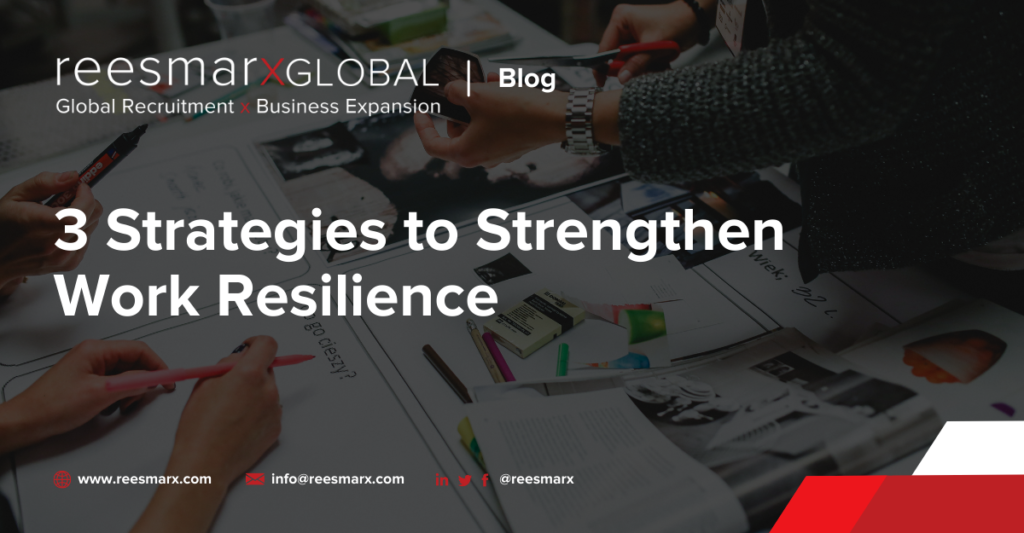One year ago, the Novel Covid-19 virus was being watched carefully.Reports from China indicated that the respiratory virus was spreading quickly.But in other countries, it had yet to appear.And business for the interim, went on as normal.
Within months Covid-19 became a global pandemic. As it was the first global health crisis since 1918, every country was not prepared for the economic and social impact that the virus would have.Social distancing became a new challenge for businesses to navigate. The two priorities were to keep employees safe, while ensuring standard business operations.
Short-term adaptive strategies by management teams are now being formulated into long term solutions.While vaccine distribution has started, the need to maintain remote work arrangements and other accommodations may continue to be necessary.
Just as businesses have had to progress into remote work, management and supporting teams on Zoom and SLACK, employees have also transitioned. The concept of the “regular workday” has been changed. Professionals must prioritize their health and safety. But at the same time, they must make themselves resilient to the rapidly changing employment environment.
What steps can professionals take to overcome obstacles to productivity and communication? What strategies can be used to build a stronger relationship with your employer, and team?Learn skills that can help you find a new opportunity or strengthen your job security with your currently employer.
1. Frame Adverse Events Into Categories of Influence
When there are so many things going on around you, it can be difficult to find your focus.The one comfort in the current pandemic, is that everyone is in the same circumstance. We all have the same concerns for safety, protecting our job, and providing for ourselves or our families.It doesn’t change how difficult some of the current economic challenges can be. But at least you know, you aren’t alone.
One exercise that can help keep things in perspective, is the “Sphere of Influence”.First, you start by considering the difficulties or obstacles that you are currently facing.And it may be concerns that you have for other people in your life as well (including family, friends, or colleagues). Draw three circles as shown below or print this diagram to get started.
How to Use the Sphere of Influence to Categorize Concerns
In the inner most circle are the things you can control.This includes cutting back on monthly expenditures and focusing on savings.Putting off a major purchase until the economic outlook has improved.It can also include making changes that improve your mental and physical wellness.
The next circle points to challenges that you have some influence over.You may not have complete control to change the outcome of the problem, but you could work on it.Use your skills to resolve the issue or improve it. This may be a friend who is unemployed, that you help with networking for a new job.Or a spouse or partner who is experiencing anxiety.
The outermost circle is the most important part of the exercise.Here you will put things that you have no control, and no influence over.The pandemic? That’s one of them. And that includes the things that have changed in your workplace, for your employer, industry or even the region that you live in.They concern you, but you have no power to change them in the immediate sense.
What Are The Benefits of Doing the Exercise?
The point of the “Sphere of Influence” exercise is to focus on the things that you can change.Can you upskill by taking some online courses?Revamp your LinkedIn profile and resume (CV) in the event that you do have to find a new job.
Once you understand that things you can control and problems you may be able to resolve, it pulls that focus to your most actionable items.And then, you can take the next steps and spend your energy on the issues that are within your power to change.
2. Complete a Labor Market Survey for Your Role and Skills
Continuing education is important. You may have years of expertise and foundational higher learning but staying competitive in your career is important. Particularly if you work in a sector or profession where there may be ample professionals vying for the same roles.
A labor market survey can take about two hours.First, you will want to search for open positions from local or global employers for your niche.What are the salaries being offered for the role? How many years of experience is required for your target salary?And most importantly, what skills, training and certifications are employers looking for?
Make a list of any skill areas that you do not currently have.You may not currently have the budget to return to formal college or university training, but trade certificates can help.Short and economical online courses that you can list on your LinkedIn profile. It tells prospective employers that you are motivated to be a life-long learner and ensure that your skills are at par with other professionals in your industry.
Another idea to strengthen your career resilience, is to research industry or profession specific podcasts. If you find some episodes that were particularly helpful or meaningful for you, share them on LinkedIn.And don’t forget to share your company’s posts on LinkedIn as well, and comment.It will ensure that you stay informed about what is going on and demonstrate that you remain an engaged member of the team.
3. Network Online to Combat Feelings of Isolation and Build Industry Resources
Even if you worked remotely before the pandemic, in most cases, you had the opportunity to go into the office for meetings. Or for special events and training.Given the restrictions and precautions of social distancing during the pandemic, professionals are not getting that facetime with colleagues and managers.
Teleconference meetings don’t quite replace the social aspect for professionals.You may have two or more Zoom meetings per day or be actively chatting in SLACK, but it doesn’t feel the same. Most professionals after a year of remote work are feeling isolated, and somewhat disconnected from their colleagues.
Some management teams are incorporating social hours into the weekly schedule of teleconference meetings. This can be a brainstorming session.Or it can be an opportunity to simply talk to your colleagues.Like you would in the office.If your company does not want to allocate that time in the work schedule, invite some members of your business unit. You may find that they are eager to have a scheduled social and touch-base weekly.It can help strengthen social connections and reduce the stress of feeling siloed while you work form home.






